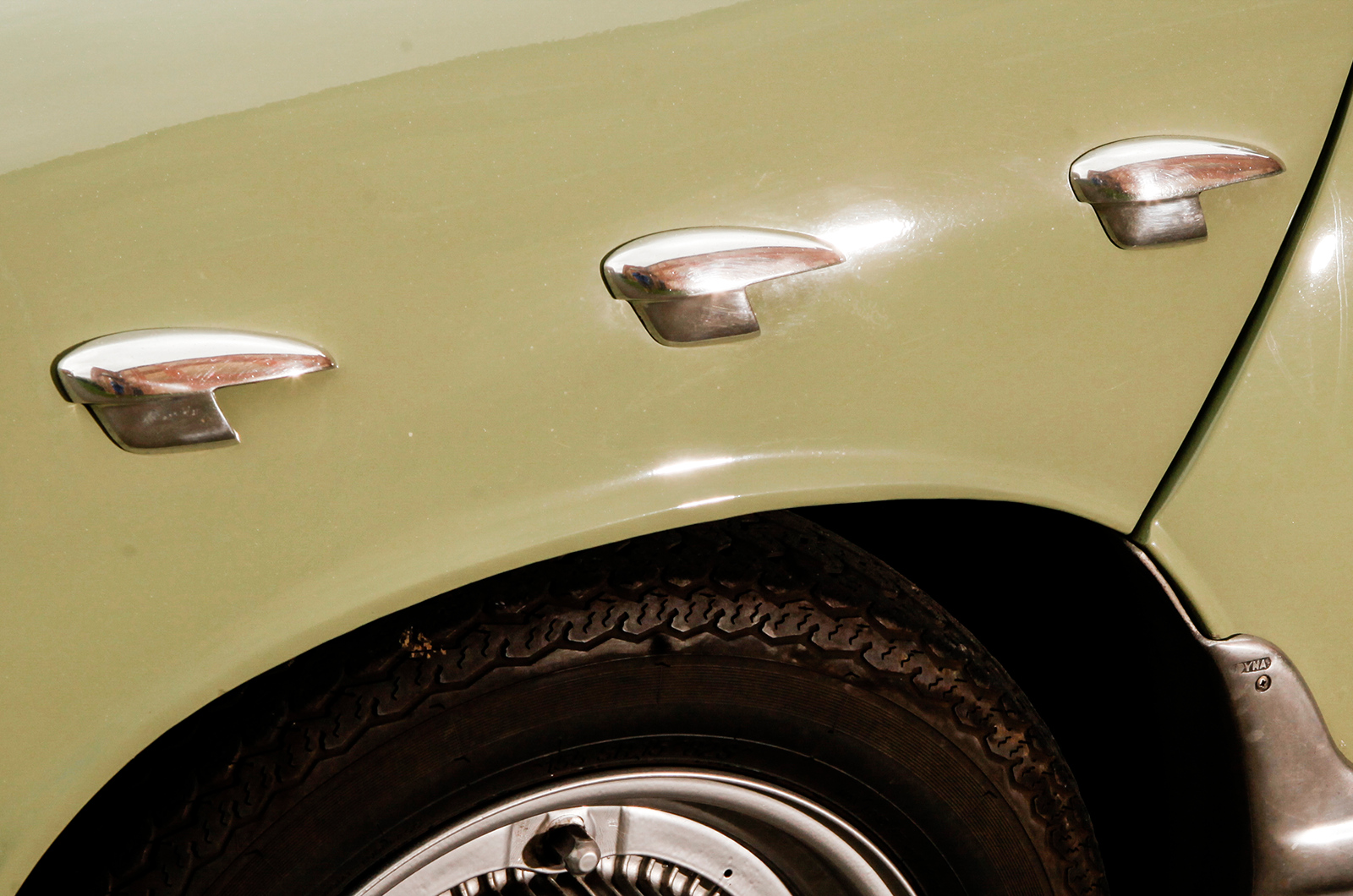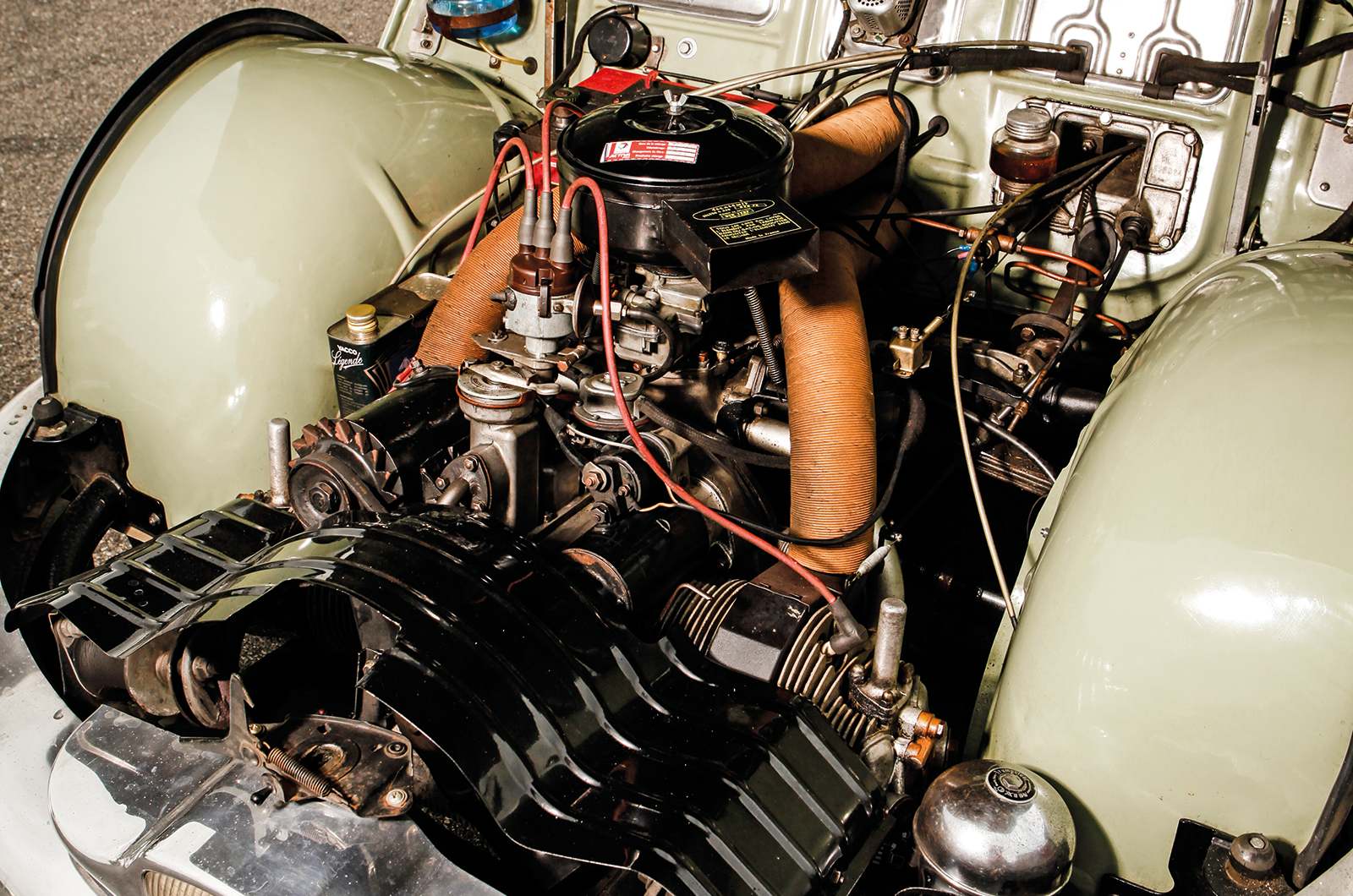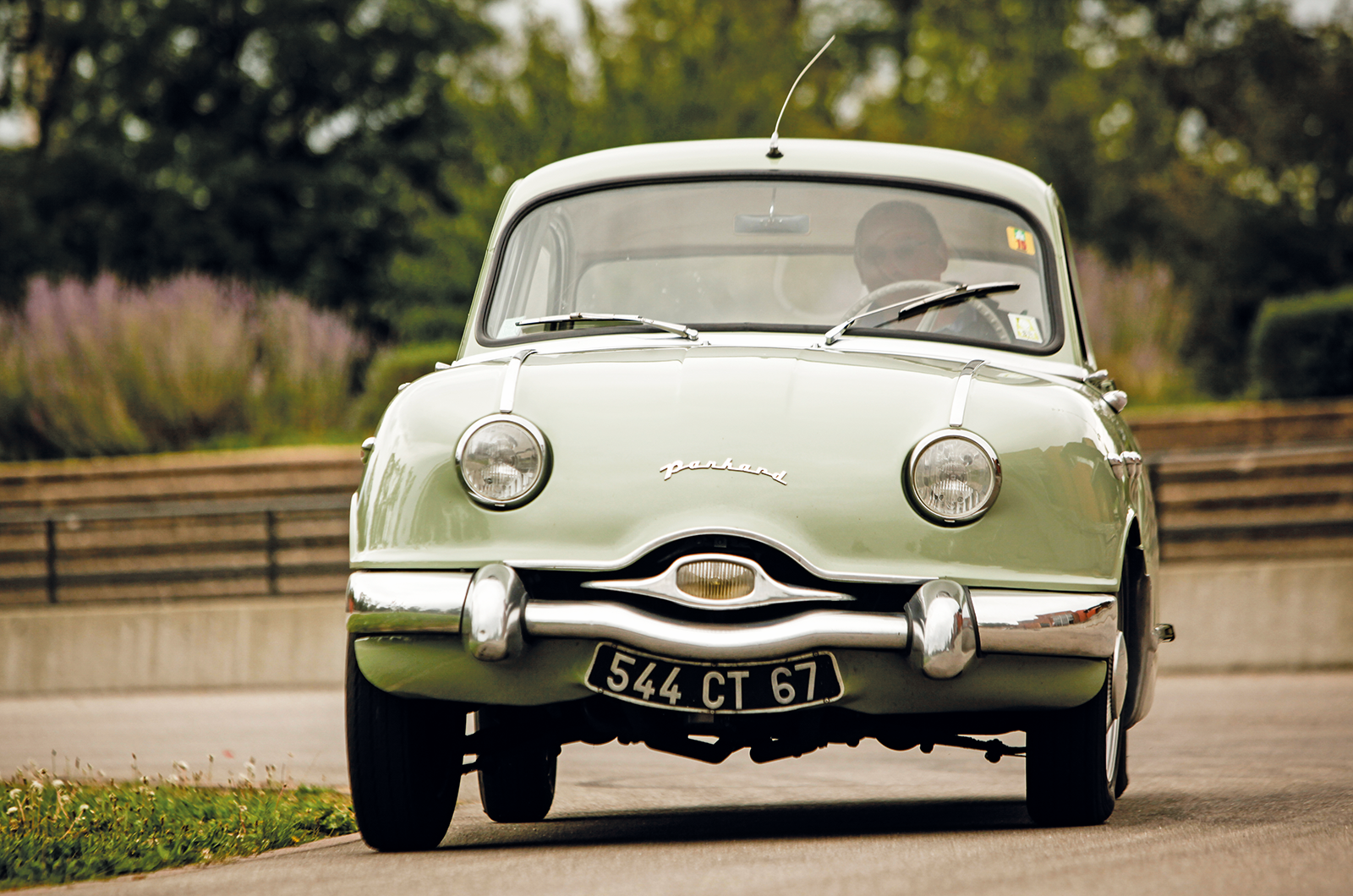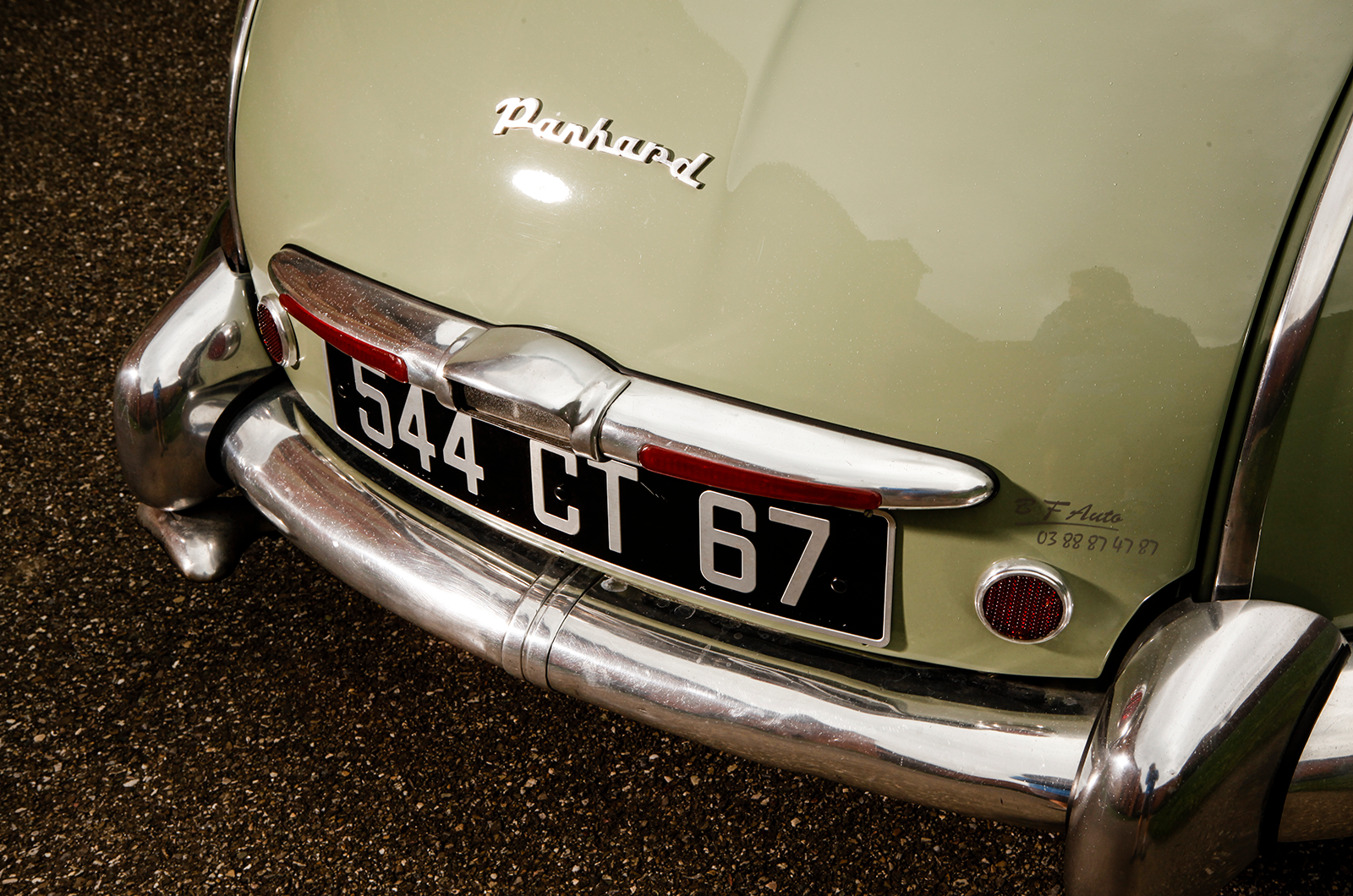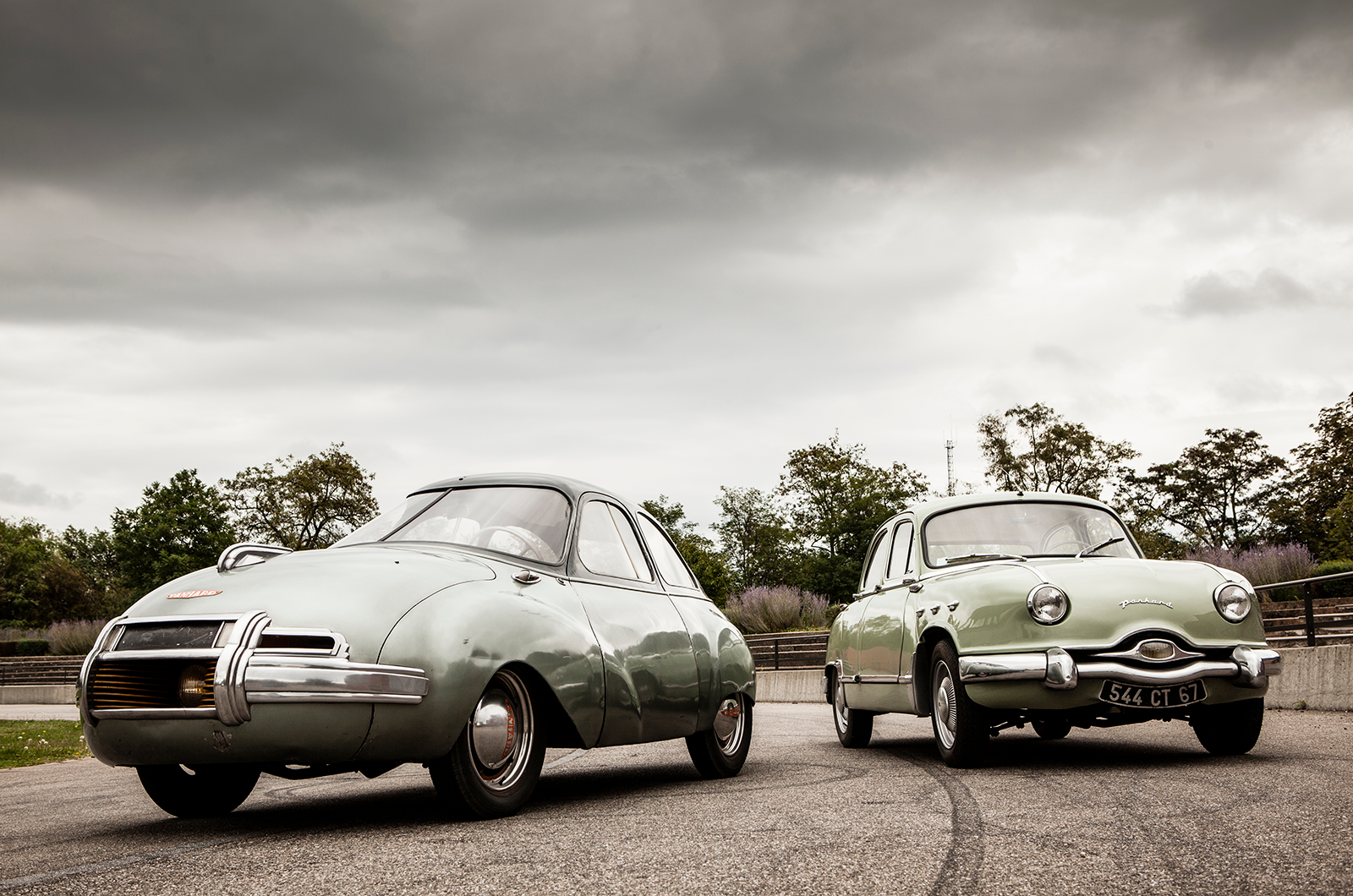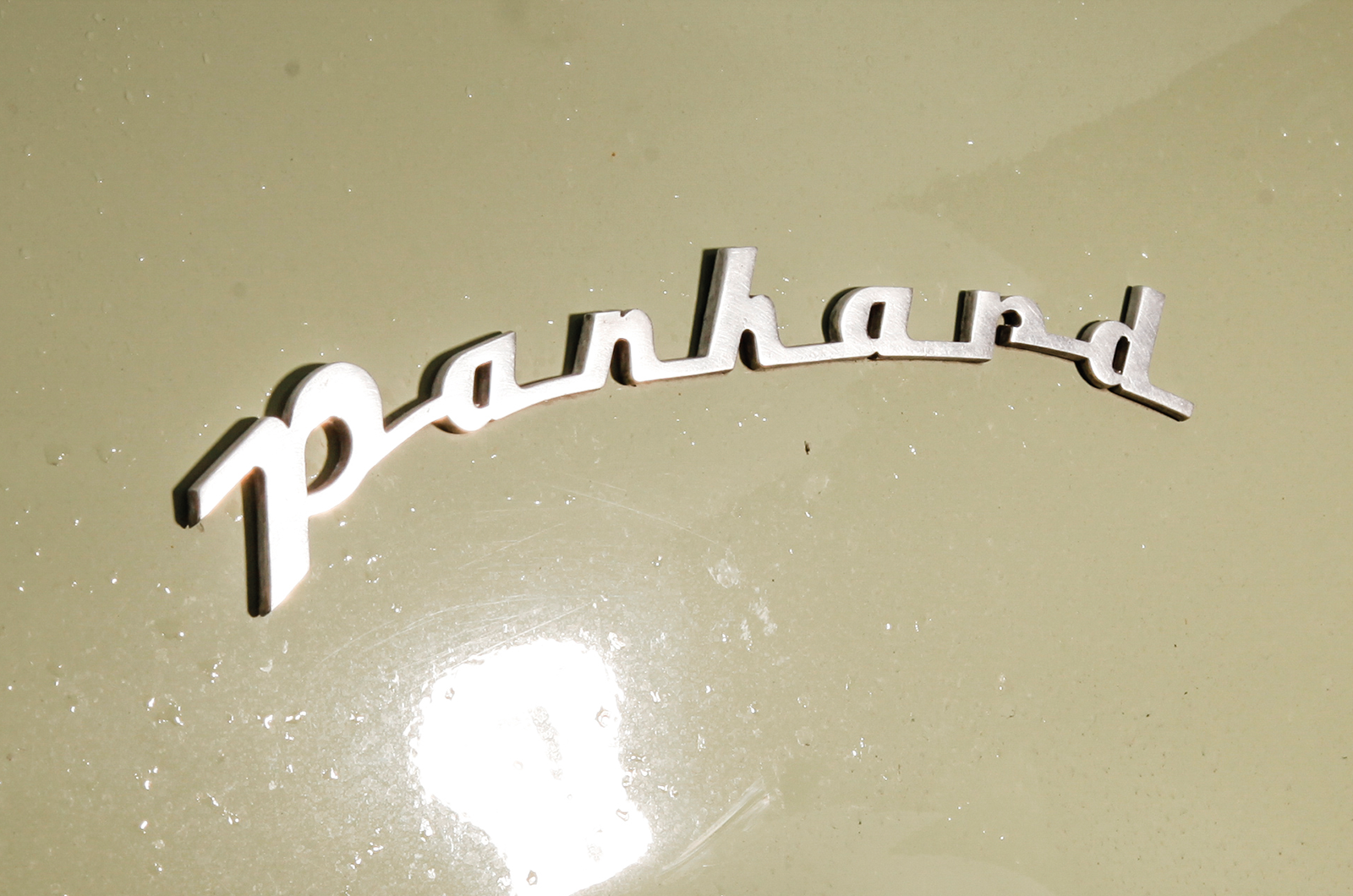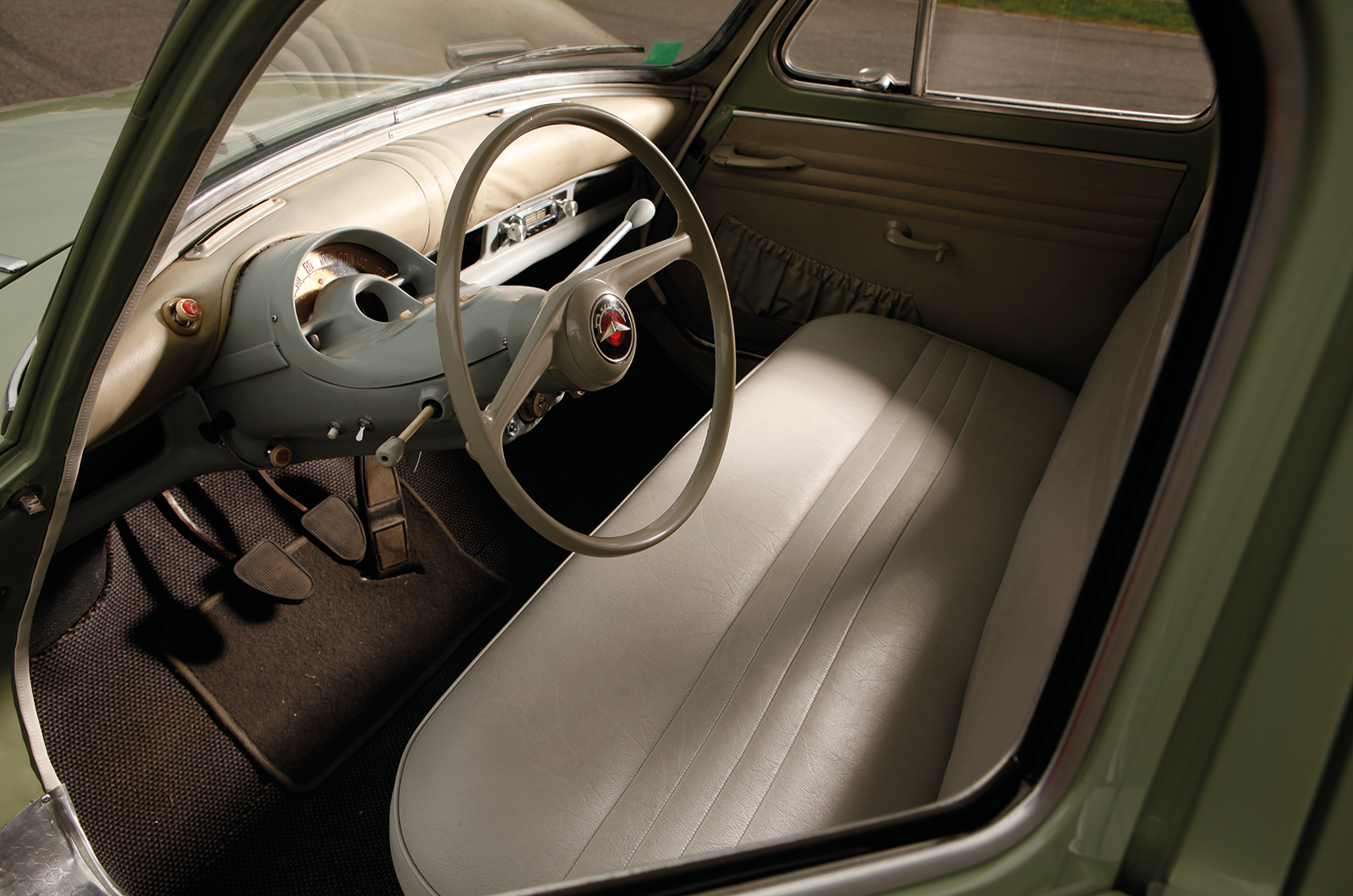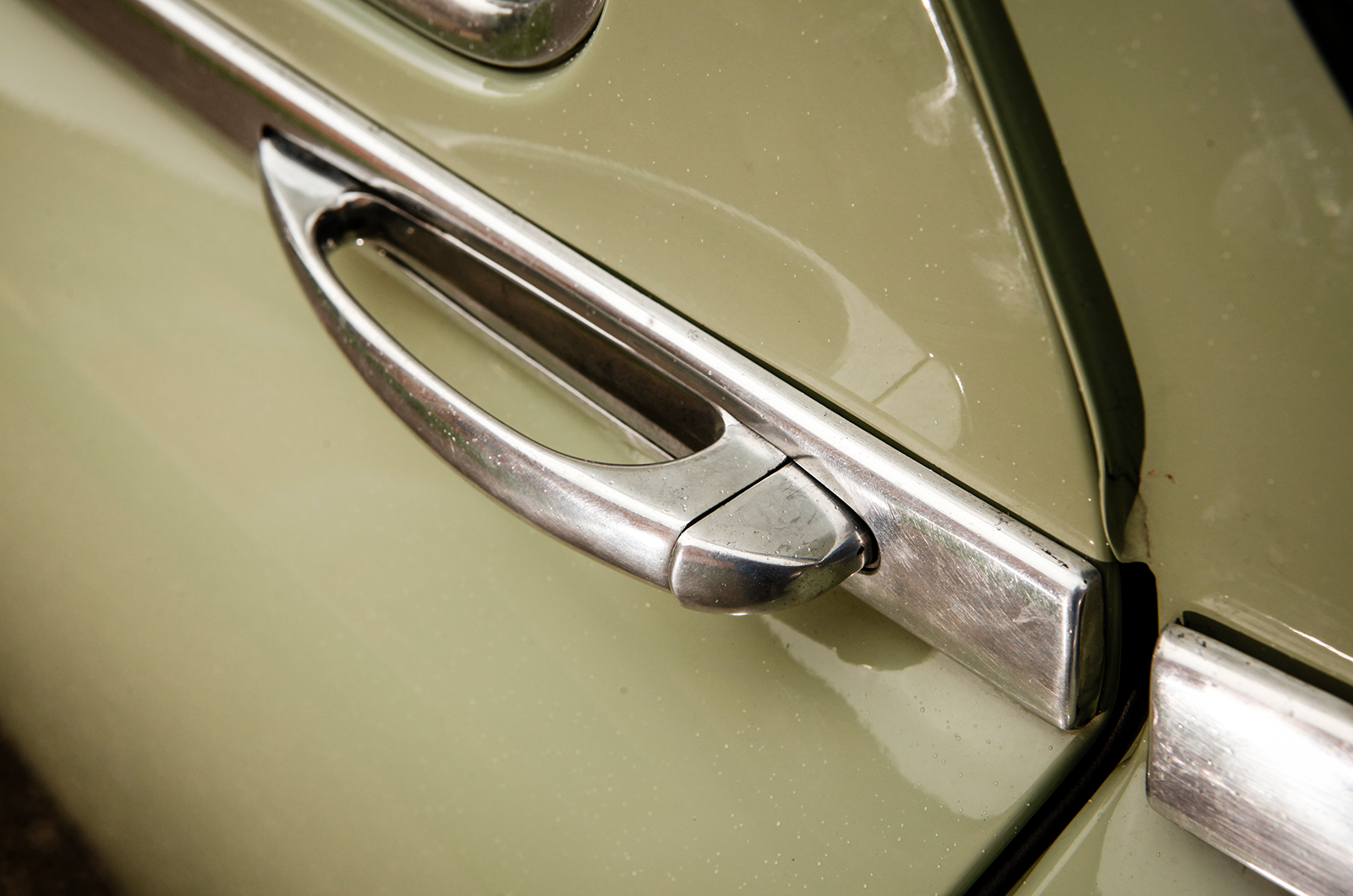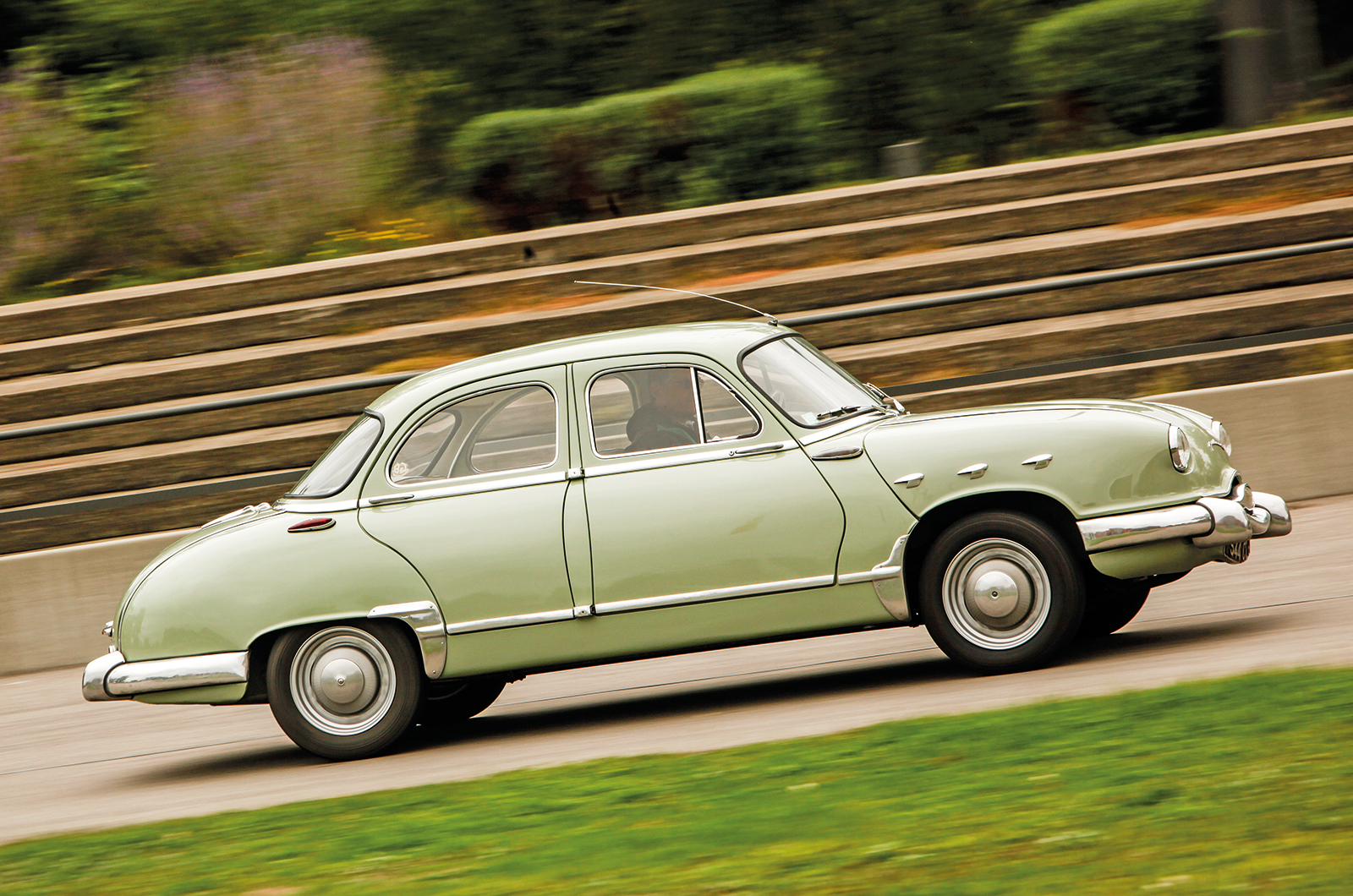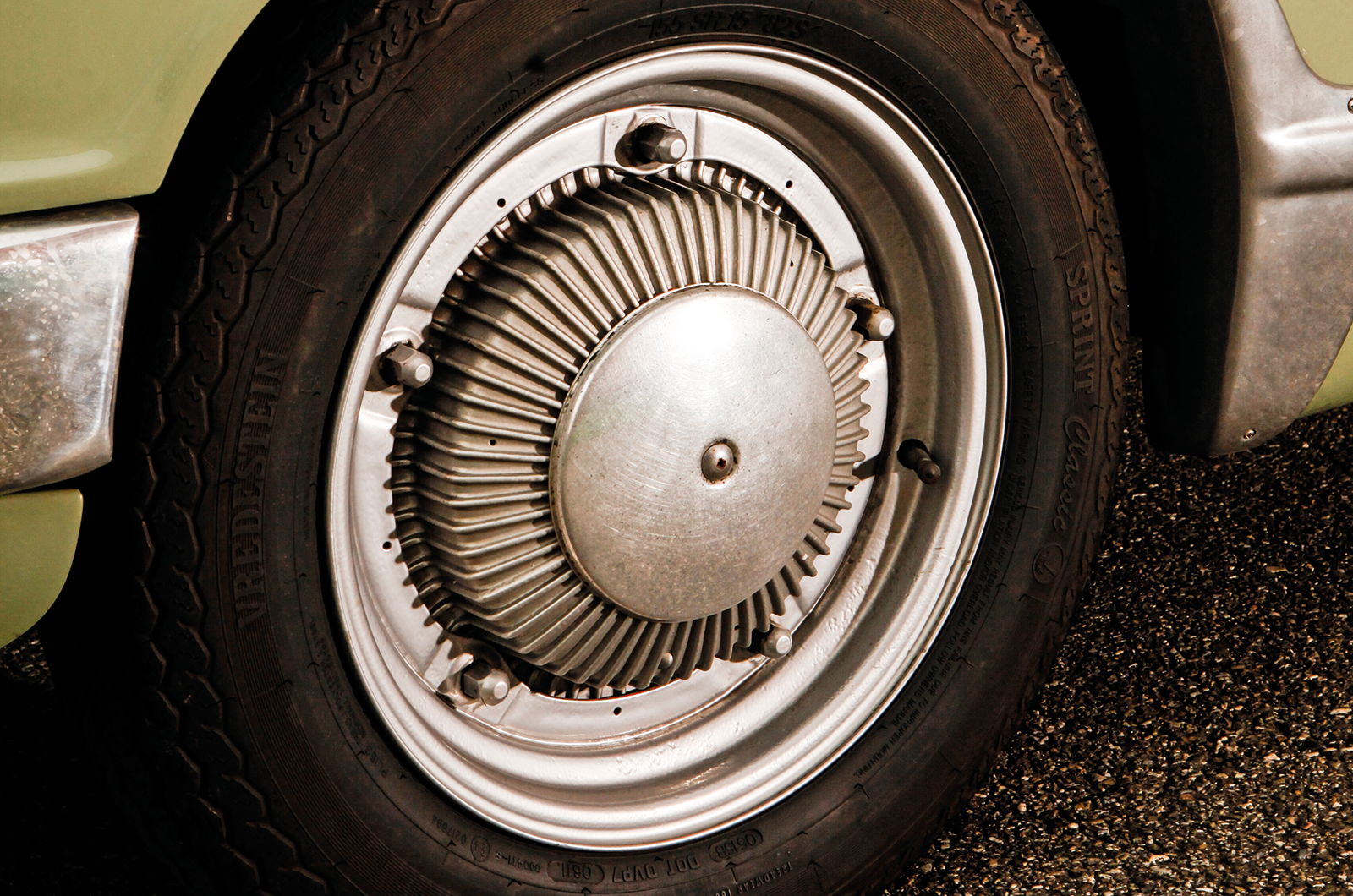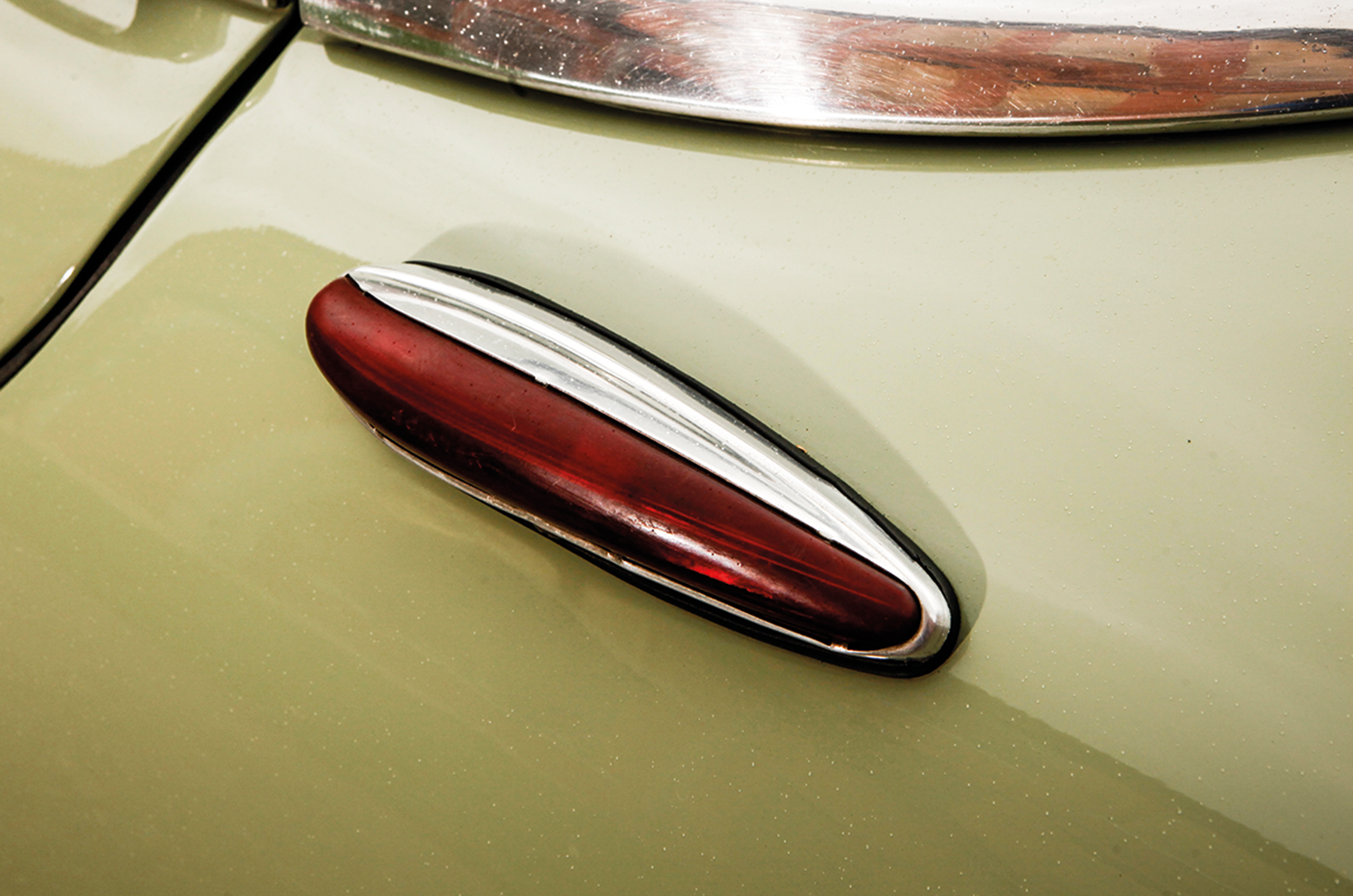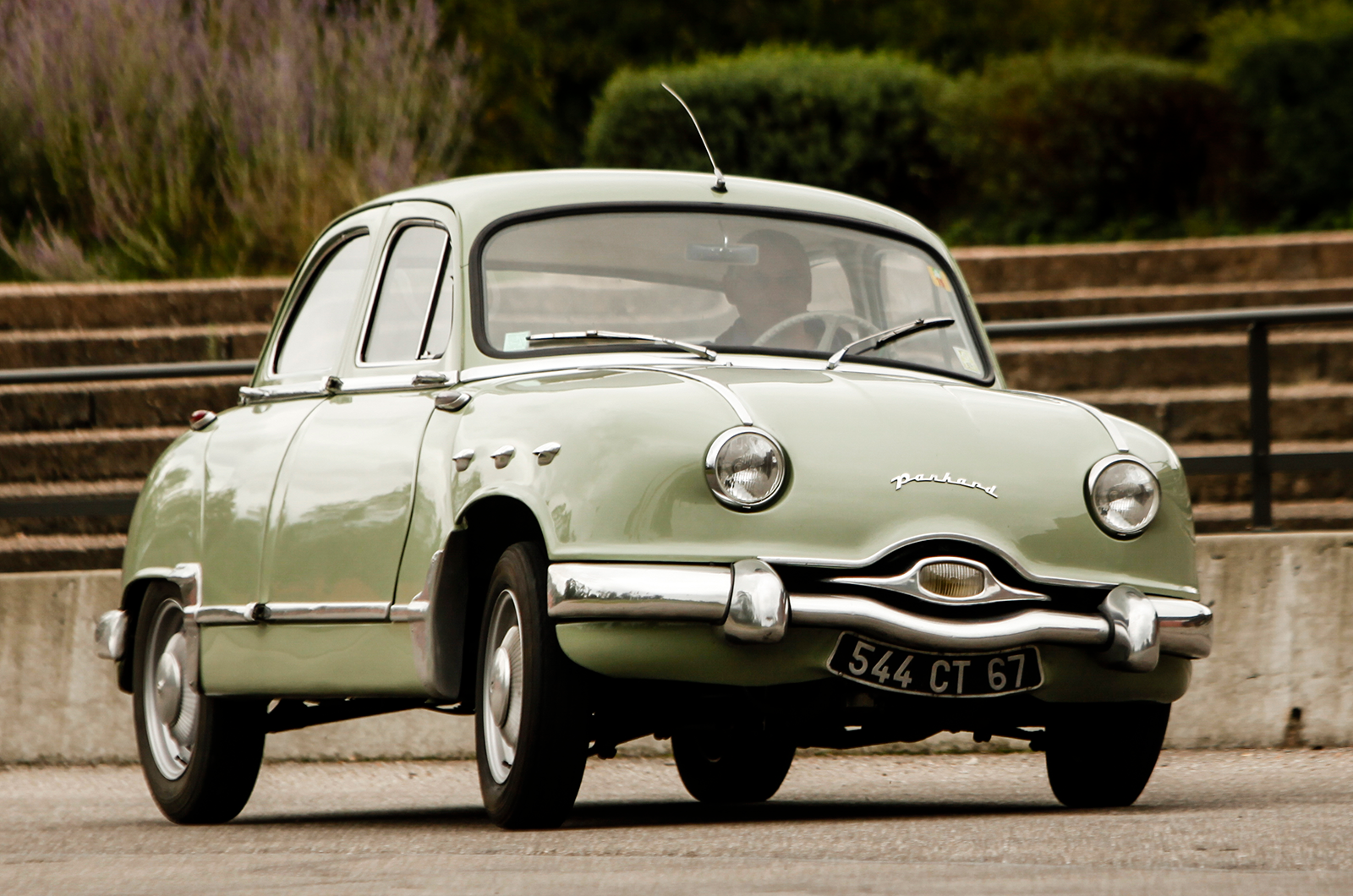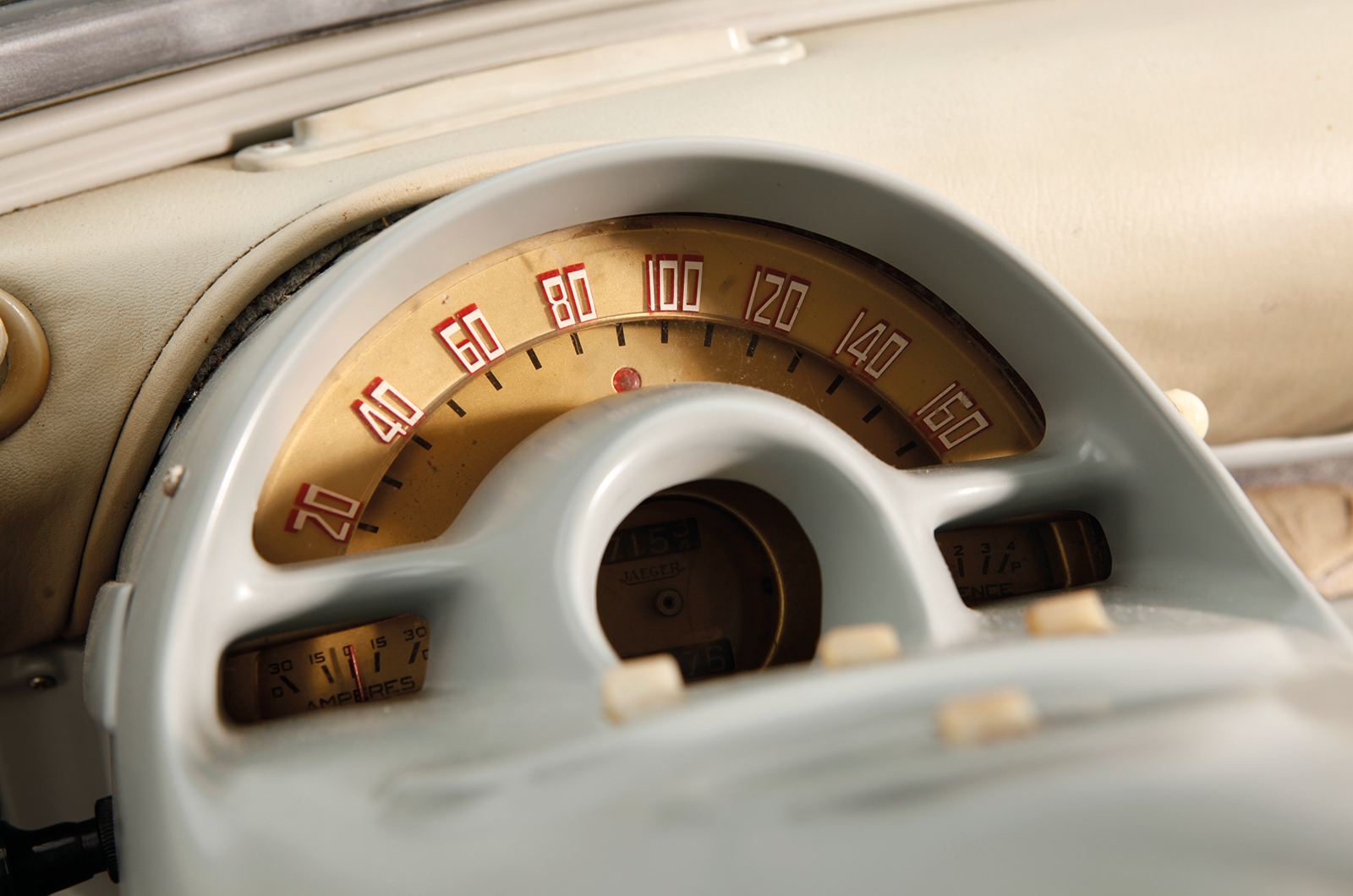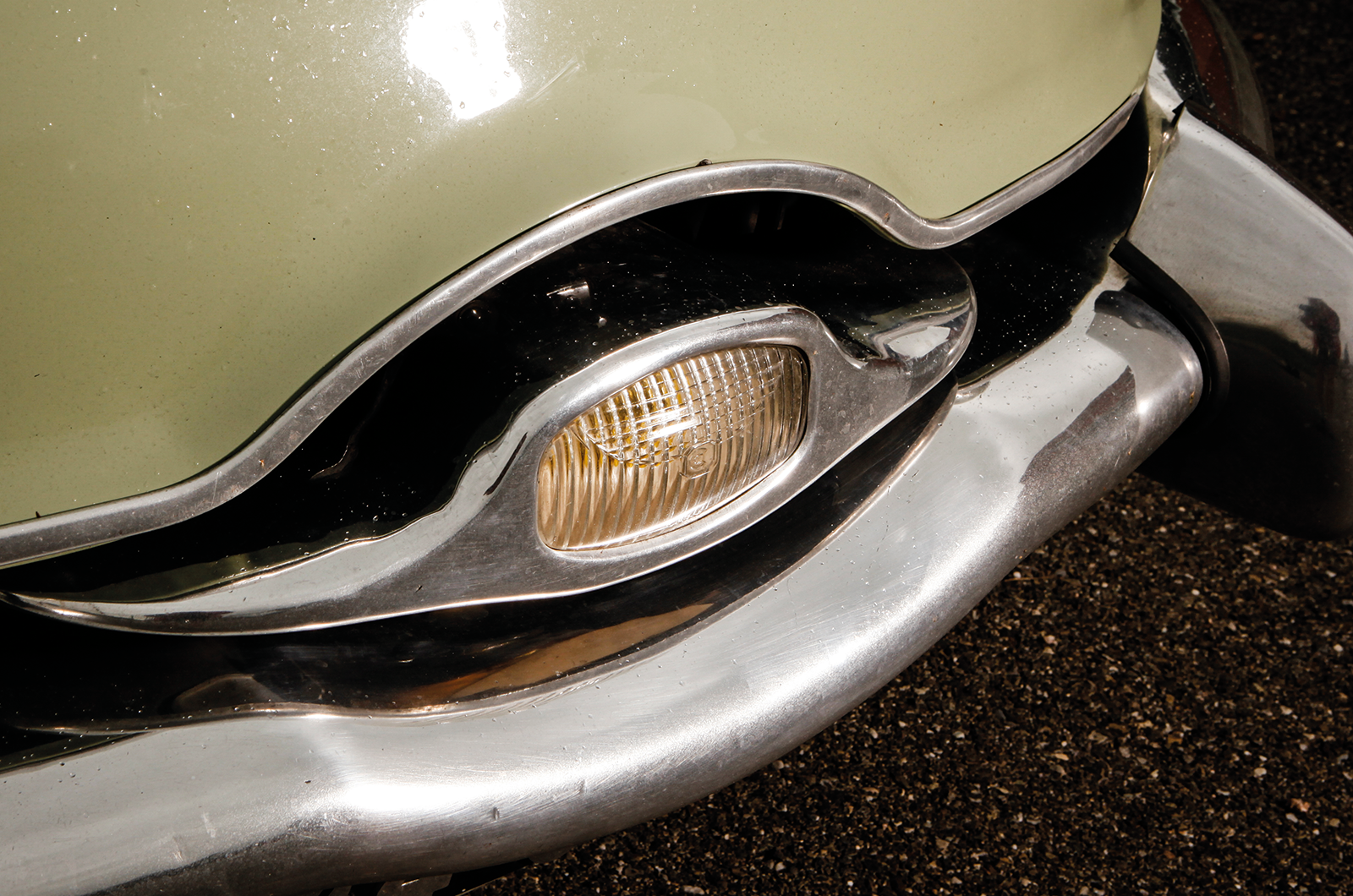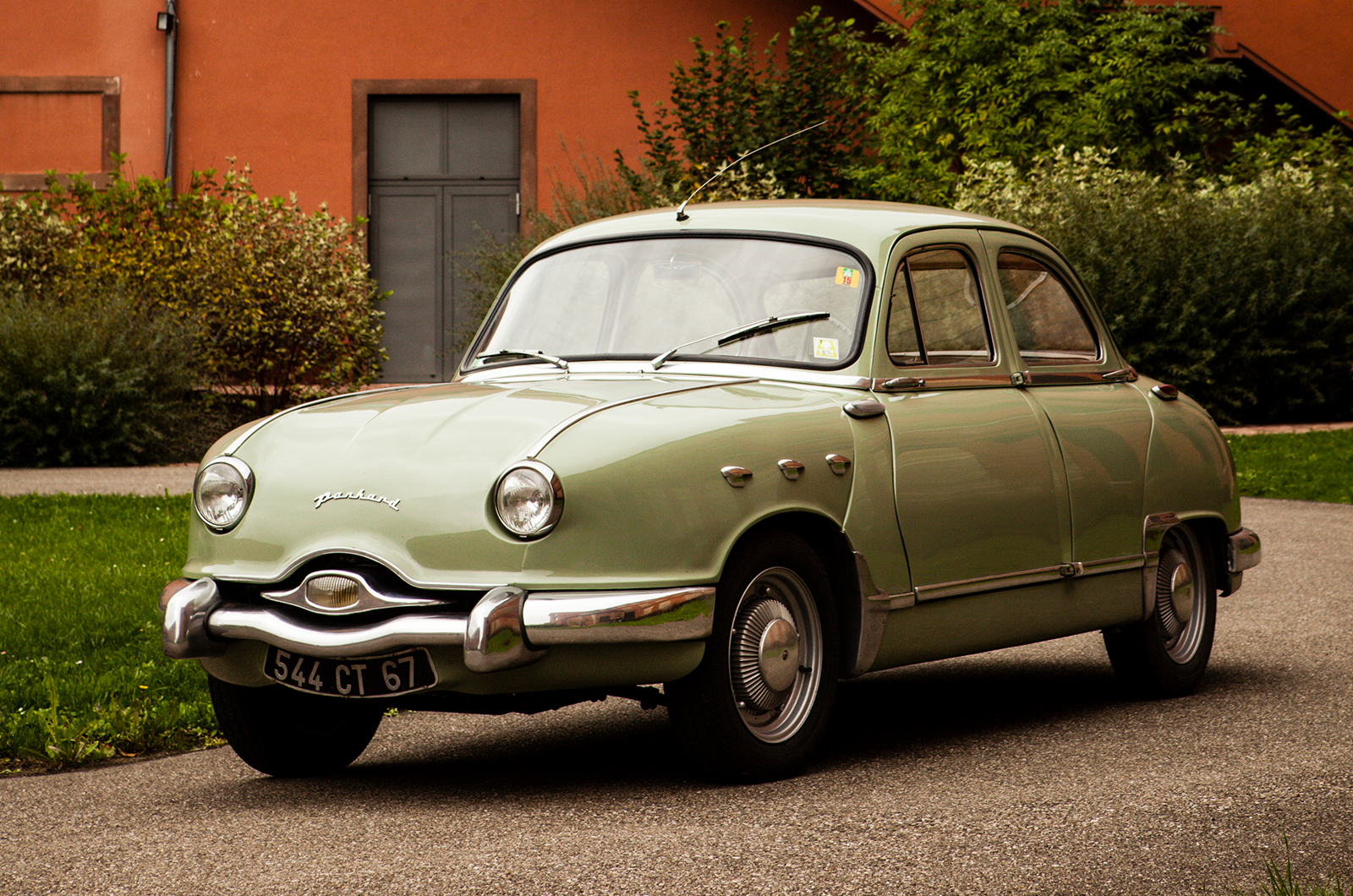Bowling along at 55mph, progress is not frantic, wind-rustle is limited, and two people can talk happily to each other.
‘The rack-and-pinion steering is precise without being weighty and inspires confidence’
There is also surprising flexibility: the Panhard pulls from almost standstill in second, and can be trickled along in third.
A tolerant drivetrain aids smooth progress, while a firm throttle and a sweet, short-travel clutch make driving agreeable; well-sized pedals help.
The column change has an elusive neutral but moves easily from gear to gear; the action isn’t very mechanical, but there’s no flop, and the old dodge of initially slotting into second ensures clean engagement of first.
The lack of synchro on fourth isn’t an issue; with a little pause, the lever slots happily into top.
The Panhard’s unmistakable central spotlamp
The rack-and-pinion steering is precise without being weighty and inspires confidence.
Late PL17 wheels bring with them finned drums that ensure braking that is worry-free if a tad wooden.
“The wheels are smaller and a bit wider, and take modern tyres, so they must help roadholding – it hangs on well in corners,” says Burckel.
This is true enough, even if there’s sufficient roll to have passengers sliding around if you are over-exuberant on motorway sliproads – no doubt the payoff for the comfortable ride.
The secret of the all-aluminium Panhard Dyna Z was how little it weighed
The lightweight body does crash a bit on poor surfaces, though.
Steel cars are acknowledged to be more refined, both because of their construction and as a result of improved sound insulation.
“As family transport the Dyna is wonderful,” enthuses Burckel. “When I took it on a camping holiday I realised what an exceptional car it is.
“It cruises at a genuine 110kph [70mph] on the motorway.
“It’ll happily do 800-900km [500-560 miles] a day, and for me it’s been reliable.”
“I’ve just done the Stelvio Pass four-up, in company with a Citroën Onze Normale Traction Avant,” he continues.
“The Dyna went a bit better than the Citroën and used about half the petrol.
“On long journeys, it does 5.9 litres per 100km [47mpg] or thereabouts.”
The later steel cars made sense commercially, but it is legitimate to regret their compromises.
The aluminium-bodied Panhard Dyna Z was arguably the most intelligent series-production saloon of its time.
That it still impresses with its performance, ease of driving and economy is testimony to the elegant effectiveness of the engineering that informed its creation.
Images: Tony Baker
This was first in our October 2017 magazine; all information was correct at the date of original publication
Enjoy more of the world’s best classic car content every month when you subscribe to C&SC – get our latest deals here
READ MORE
Horizontally opposed: Panhard 24CT vs Volkswagen Karmann Ghia
Peugeot 203 Spécial Darl’mat: France’s unlikeliest sports saloon?
Tatra T87, T603 and T613: left-field marvels
Jon Pressnell
Jon Pressnell is a contributor to Classic & Sports Car

